- Bermuda vs St Augustine Grass: Which Is Right For You? - March 15, 2021
- How to Fix Yellow Grass: Top Tricks and Ideas You Must Know - March 14, 2021
- Best Soil Test Kits – 7 Top Picks to Get the Job Done - December 16, 2020
There are memories that a freshly mowed lawn can bring back, perhaps those of lazy Sunday afternoons spent with family or just laying on the grass gazing up to the clouds. A beautiful lawn can make you the envy of the block and adds more than just aesthetics but also raises your property’s value by as much as 15 percent.
A nice looking lawn means you’d have an extended living area, an outdoor setting for relaxation, recreation, and entertainment. However, it may mean a lot of hard work to have the perfect grass lawn. But if you have settled down to a rhythm of mowing, fertilizing, and controlling weeds, it will become a lot easier.
What are the things that you should do to grow the perfect grass lawn? You need to plan ahead and know what you will use your yard for, and what types of grass you’d want to grow. After that, it’s a matter of doing some activities that will keep it healthy and thriving, such as:
- Watering
- Mowing
- Aerating
- Fertilizing
- Composting
- Overseeding
- Fighting lawn diseases
The list certainly sounds a lot, and beginners might have no idea what they are and how to do them right. But sit back and read on as we demystify the fine art of growing the perfect grass lawn.
Starting Out: How to Lay the Foundation for the Perfect Lawn
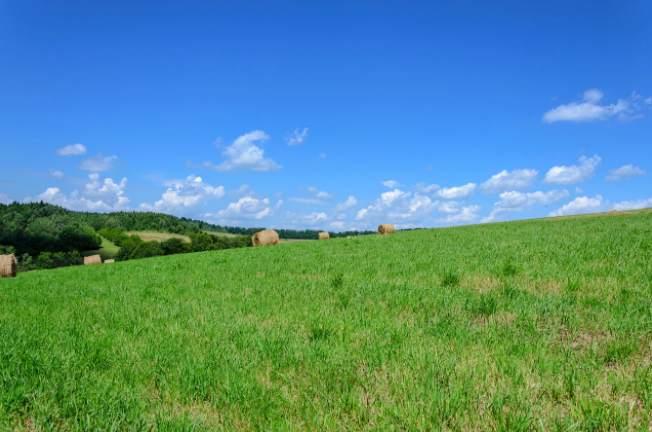
Having the perfect lawn starts with a lot of planning. You should know what your yard would look like. Answer the following questions:
- What areas are going to be used the most?
- Who is going to use the lawn?
- Which areas have the most sun?
Lawns need full sun, so if there are shaded areas in your lot, you will need to consider using feature plants, shrubs, or trees that can survive in the shade.
You should also be clear about what you’re going to use your lawn for. If you want your pets or kids to have a play area, a full lawn will provide them all the space they need to run around and be active.
If you plan to use your lawn for entertaining, you can consider having a patio area and a half lawn for all those barbecues, garden shindigs, and regular outdoor gatherings.
Side-by-Side Comparison of Some of the Most Common Grasses
To help you choose what types of grass you’d want for your lawn, here is a comparison of the most common types of grass today:
1. Creeping Red Fescue
- Full Sun Needed?: Semi-shade is okay
- Drought Tolerant?: Yes
- Growing Season: Cool
- Growth Rate: Slow
- Foot Traffic Tolerance: Moderate
2. Double-dwarf fescue
- Full Sun Needed?: Tolerates light shade
- Drought Tolerant?: Yes
- Growing Season: Year-round
- Growth Rate: Slow
- Foot Traffic Tolerance: Poor
3. Dwarf tall fescue
- Full Sun Needed?: Yes
- Drought Tolerant?: Yes
- Growing Season: Year-round
- Growth Rate: Moderate
- Foot Traffic Tolerance: Poor
4. Hybrid Bermuda
- Full Sun Needed?: Yes
- Drought Tolerant?: Yes
- Growing Season: Warm
- Growth Rate: Fast
- Foot Traffic Tolerance: Excellent
5. Kentucky Bluegrass
- Full Sun Needed?: Semi-shade is okay
- Drought Tolerant?: No
- Growing Season: Cool
- Growth Rate: Moderate
- Foot Traffic Tolerance: Good
6. Perennial ryegrass
- Full Sun Needed?: Yes
- Drought Tolerant?: Yes
- Growing Season: Cool
- Growth Rate: Fast
- Foot Traffic Tolerance: Good
7. Seashore paspalum
- Full Sun Needed?: Yes
- Drought Tolerant?: Moderate
- Growing Season: Warm
- Growth Rate: Fast
- Foot Traffic Tolerance: Good
8. St. Augustine
- Full Sun Needed?: Tolerates shade
- Drought Tolerant?: Yes
- Growing Season: Warm
- Growth Rate: Moderate
- Foot Traffic Tolerance: Moderate
9. Tall Fescue
- Full Sun Needed?: Yes
- Drought Tolerant?: Yes
- Growing Season: Year-round
- Growth Rate: Fast
- Foot Traffic Tolerance: Poor
10. Zoysia grass
- Full Sun Needed?: Yes
- Drought Tolerant?: Yes
- Growing Season: Warm
- Growth Rate: Slow
- Foot Traffic Tolerance: Excellent
Seed or Lawn Turf?
Once you have decided which spots of your lot will be allotted for your lawn, it’s time to determine if you want to plant grass seeds on it or lay down lawn turf.
Lawn seeds are more affordable, and you can quickly spread these seeds, especially in tighter and smaller spaces. But it may take longer before you get a green lawn.
On the other hand, lawn turf will allow you to have immediate results and free you from the wait and maintenance of planting grass seeds. But it can be more expensive to lay down lawn turf, and it may not look as natural as you want it.
Prepare Your Lawn
Once you’ve bought either grass seeds of lawn turf, you should prepare your lawn. Rake the soil and remove trash, weeds, and stones from the area.
Doing so will not only help you grow healthier grass, but it will save you a lot of work later on when you’re mowing the lawn. What’s more, it will keep your lawn safer for your pets and kids, even if the little ones run around barefoot.
When you have already removed the stones and other debris, use a garden fork to rotate the soil. Once you’ve done this, rake the earth to make the ground level and then tamp it down to remove air pockets. Wait for fr a few weeks for the ground to settle and then rake it before you put down the turf or sow the seeds.
Checking the Soil pH
Depending on the seeds you want to use, you will have different pH levels to help the grass grow green and healthy. For instance, while most turfgrasses can survive where the soil pH is between 5.0 to 7.0, Zoysia grass, Bermuda grass, and some bluegrass varieties prefer a pH level between 6.0 and 7.0. Fescue grasses like pH levels of 5.0 to 6.0. Ornamental grasses prefer anything between 5.0 and 8.0 pH.
If the soil is not ideal for your preferred grass type, you can amend it. For acidic soils, you can add lime to the ground. If you have alkaline soil, you may add sphagnum peat, aluminum sulfate, elemental sulfur, acidifying nitrogen, organic mulch, or iron sulfate to your soil.
This video teaches you what other materials you can use to amend the soil.
Planting the Grass Seeds or Laying down the Lawn Turf
After all that preparation, you’re now ready to start your lawn. This video will show you how to lay down lawn turf:
Meanwhile, this video will help you learn how to plant grass seeds.
Watering Your Lawn
Watering a lawn is just a matter of turning on the sprinklers for a few minutes twice or thrice a week, right? But that’s just being wasteful, and it doesn’t really make your lawn healthy.
The correct way to water your lawn is to water infrequently but deeply. Doing so will let the water reach down to the roots, which encourages it to grow deeper.
Why does this matter? During dry periods, the topmost part of the soil will become dry. If the roots of your grass stay on the shallow part, the roots will soon deplete the moisture that’s there. Whereas if the roots do reach deep, they will have access to water that is less likely to evaporate during the hotter days.
But how much water should you give your lawn, and how often should you turn the sprinklers on? Scotts recommends around 1.0 to 1.5 inches of water per week. This amount of water will make the top six to eight inches of soil sufficiently wet.
Have You Given Your Lawn Enough Water?
How do you know that you’ve given your lawns an inch or so of water? The best way is to put shallow containers at different areas of the lawns and turn the sprinklers on, and your job is done when these containers have been filled with water an inch to 1.5 inches deep.
Or you can calculate the time you need to water your lawn based on the sprinkler system’s flow rate. You can get the flow rate from the manufacturer.
Divide your lawn’s square footage by 0.62 gallons, and then divide the result with your sprinkler’s flow rate. Why 0.62 gallons? Because that’s equivalent to an inch of water for every square foot
Watering Tips
For the first year after sodding, sprigging, or plugging down your lawn, be sure to give it extra watering. You shouldn’t just rely on the rain.
A newly seeded lawn needs the top inch of soil to be always moist. But be careful not to leave it soggy. When the soil starts to germinate and sprout, give it more water to moisten the top two inches. Reduce the watering when the grass reaches three inches.
When that happens, you can cut back the watering to twice a week, making sure that you soak the soil around six to eight inches deep.
Other stuff you need to keep in mind:
- If you like cool-season grasses that can survive droughts, then plant tall fescue.
- Cool-season grasses often go dormant on the hotter days unless you water them regularly.
- Warm-season grasses need less water than cold-season grasses.
- Give your lawn more water during hot days, drought, high winds, or low humidity.
Here’s a video that will show you how to water your lawn correctly.
Some Products You Can Buy
If you are looking for some watering solutions for your lawn, you can choose from:
- Hose-end sprinklers
- Smart watering systems
- Pulsating sprinklers
- In-ground sprintklers
Hose-End Sprinklers
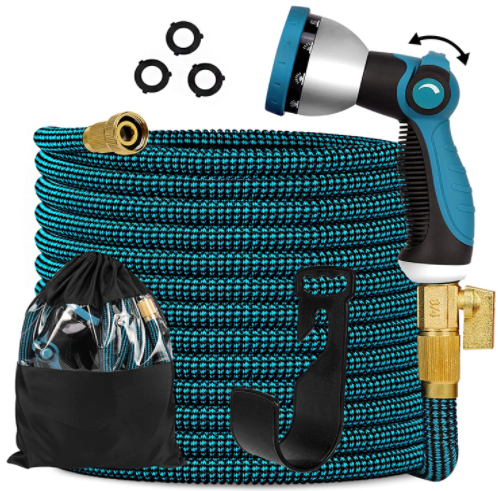
Hose-end sprinklers are perfect for small lawns. Products like the Knoikos Garden Hose are as straightforward as they get, just turn the water on and sprinkle your lawn with enough water.
This hose can expand when in use and niftily goes back to its original length when you turn off the water.
Smart Watering Systems
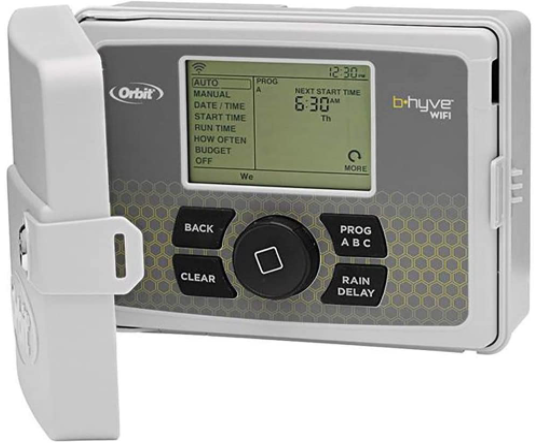
Smart watering systems can be a tremendous help if you have big lawns or a variety of conditions. Yards that have different soil types, sun and shade times, and slopes have different water requirements. What’s more, you will have to remember when it rained last, or whether it will rain today.
Smart sprinkler controllers take care of all that. It will check the weather report to see if your lawn needs to be watered, and it can check the soil to see if it’s moist enough.
Buy something like the Orbit 57946 B-have Smart Indoor/Outdoor 6-Station WiFi Sprinkler System Controller, and you can worry less about watering your lawn.
Pulsating Sprinklers
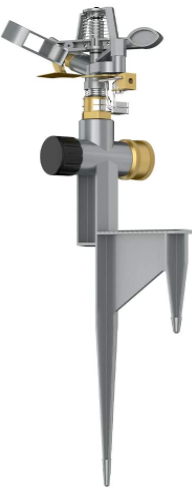
Water guzzlers or pulsating sprinklers shoot water out fast. The high velocity allows the water to reach farther areas of your lawn and isn’t affected by strong winds.
The VLAY Zinc Pulsating Sprinkler is made with durable and high-quality metals. You can use it to water a large area of up to 5,672 square feet. You can adjust the coverage as needed.
In-Ground Sprinklers
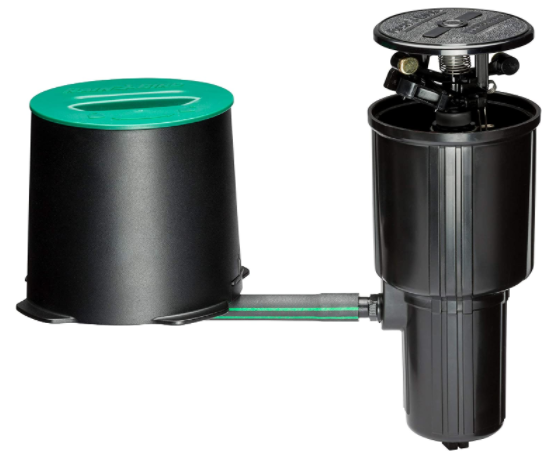
With sprinklers closer to the ground, this is one of the more efficient sprinkler types. The Rain Bird LG3HE In-Ground Impact Sprinkler can be added to your lawns without needing to trench your yard. You only need a small hole to put the sprinkler in and connect your hose.
This in-ground sprinkler can cover up to 5,200 square feet of space.
Mowing Your Lawn
Maintaining your lawn means you have to mow it. It’s hard work, but really worth it when you see how great it looks. Let’s start with when you should be mowing your lawn.
Avoid mowing your lawn when the grass is wet, which means you shouldn’t cut after it rains or during early mornings. Cutting wet grass can make it more at risk of disease. It’s also a hazard because the ground is quite slippery.
The ideal time to cut the grass is in the later afternoons, after the hottest part of the day is over.
For new lawns, also follow these specific best practices for mowing new grass.
Consider Using a Reel Mower
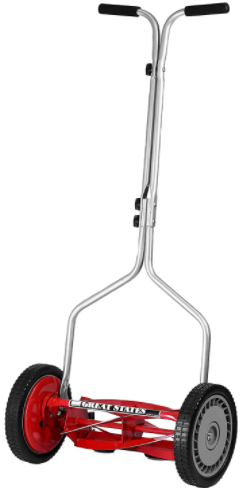
A reel mower like the Great States 304-14 14-Inch 5-Blade Push Reel Lawn Mower is a manual mower that doesn’t need a power source. You will need to push it to get more of a workout while also keeping things quiet and the environment cleaner.
But reel mowers are not as powerful as other types of lawnmowers. They cannot chop up twigs, so they tend to get stuck within the blades. That means you will need to rake your lawn before using a reel mower to cut the grass.
Reel mowers are also useless against tall grass.
Alternatives to a Reel Mower
There are two types of mowers available if you don’t like using a reel mower.
Cordless Electric Mowers
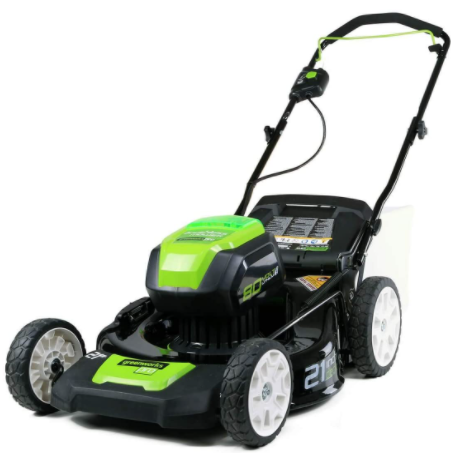
A cordless electric mower is also great for those who don’t like using a reel mower. You power it using a rechargeable battery.
This type of mower doesn’t emit fumes that can be harmful to you and the environment. There is also no danger of accidentally cutting a power cord when you run over it.
However, because it uses rechargeable batteries, cordless mowers soon die out and cannot finish mowing a lawn that is more than a third of an acre in size. What’s more, while it can cut tall grass, this type of mower might not be the best one for that job.
Some products you should consider:
- Greenworks 2501202 Pro 21-Inch Cordless Push Lawn Mower
- Snapper HD 48V MAX Cordless Electric 20-Inch Lawn Mower Kit
- Sun Joe iON16LM 40-Volt 16-Inch Brushless Cordless Lawn Mower
Gas-Powered Mowers
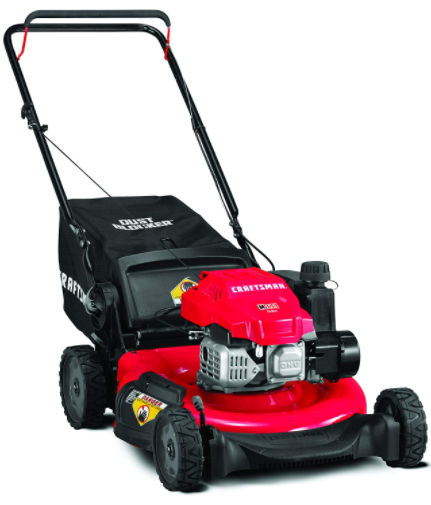
When dealing with a bigger lawn, you might find that gas-powered mowers can do the work efficiently. It’s great for tall grass as well. But these mowers often emit fumes that can be hazardous to your health.
Also, while gas-powered fumes can be affordable, it is very noisy when it runs. Products like the CRAFTSMAN 11A-U2V2791 3-in-1 149cc Engine Gas Powered Push Lawn Mower can cut your grass on six height settings and can be easy to store when not in use.
How Much Should You Cut?
What is the ideal cutting height for different types of grasses?
| Type of Grass | Cutting Height (in inches) |
| Kentucky Bluegrass | 1.5 to 2.5 |
| Ryegrass | 1.5 to 2.5 |
| Fescue | 1.5 to 2.5 |
| Tall Fescue | 1.5 to 3 |
| Bermuda | 0.5 to 1 |
| St. Augustine | 1 to 33 |
| Bentgrass | 0.25 to 0.75 |
| Centipede grass | 1 to 2 |
| Zoysia | 0.5 to 1 |
| Buffalo grass | 2 to 3 |
With buffalo grass, you can leave it unmowed, and it will still be beautiful.
Some Tips When Mowing Your Lawn
What are other things that you should remember when mowing your lawn?
- Only mow your lawn using sharp blades. You should sharpen the mower blade every one or two months.
- Take care of the filters. Change paper filters or clean foam filters.
- Check all the bolts and nuts to ensure that they are correctly tightened.
- Don’t cut the grass too short. Longer grass has more leaf area exposed to the sun, which helps it push longer roots down into the ground.
Aerating Your Lawn
Foot traffic, kids, and pets can make the soil under your grass lawn compacted. What’s more, the things you do for your yard, such as that weekly mowing, can also pack the soil together.
According to the University of Minnesota Extension, compact soil has tighter pore spaces in between or has fewer pores. The dense soil can be a problem if you want lush lawns because water finds it difficult to seep through it. Instead, the water runs off, leaving the ground dry and parched.
Compacted soil can also cause water to pool over your lawn. If water has difficulty getting in, the gases within the ground are also more stagnant. The dense soil slows down the exchange of gases.
Roots will also have a more difficult time trying to penetrate the compacted soil. What’s more, the soil’s nutrients can be blocked by compacted soil, so your grass doesn’t get enough of it.
How to Aerate Your Lawn
When your turfgrass is not looking lush and green, or if you see that the water is taking longer to seep down the soil, then it might be time to aerate it. To be sure, you should dig out a section of the grass that measures a square foot.
Take out a six-inch deep section and check if the roots are spreading downwards. If the roots are limited to the top two inches of soil, you need to aerate your lawns.
Two Types of Aerators

Spike aerators puncture your soil so that the air and water can get in. Plug aerators, on the other hand, have hollow tines to take out plugs of soil.
Between these two, plug aeration is more suitable if you want to lessen soil compaction. Spike aerators tend to make the soil more compact because they push it further into the ground. As such, if your lawn has clay soil, it’s better to do plug aeration.
However, you can only use plug aerators when the soil is moist. When the soil is parched in the summer, it will not be as effective in removing soil plugs. On the other hand, using spike aerators when the ground is wet will only leave it more compact because the soil sticks to the tines. Read our full guide on how to find the best Aerator here.
With a smaller lawn, you can use something like the Agri-Fab 45-0365 Push Spike Aerator or the Garden Spike Aeration. For bigger yards, there are the tow-behind versions, such as the:
This video will demonstrate how to use a plug aerator on your lawn.
While this video shows you how to aerate your lawn manually:
The Different Aeration Tines
Aeration tines are essential too. The tines determine how the soil is to be aerated, and several types are available. The most common are slit, hollow, and solid tines.
- Solid tines, or spikes, include your regular garden fork and may be used all year round. Spikes can keep the soil surface open and allow the rain and water to reach the roots and rhizomes.
- Slit tines help cut roots to encourage more growth and strength. These flat tines have sharp edges used during autumn as the roots start growing and should not be used in the summer because it can result in cracked soil.
- Hollow tines are used for coring, which is done in the autumn or spring. These tines are punched into the topsoil so that the thatch layer is reduced, which prepares the soil for overseeding.
This video shows you the differences between different types of tines.
Some Tips When Aerating Your Lawn
What are the things that can ensure that you aerate your lawn properly?
- You should do plug aeration once or twice yearly.
- Spike aeration can be done if the soil is very compact as these holes last longer and go deeper into the ground.
- For dry soil, you might want to water your lawn the night before you aerate it. If it has been raining for some nights, there is no need to water the soil.
- Do not aerate a freshly sodded or seeded lawn for at least a year.
- Rye, bluegrass, fescue, and other cool-season grasses are best aerated in August, September, or October. Warm-season grasses, on the other hand, are best aerated from April to June.
- If you don’t own one, rent an aerator from a garden center.
Fertilize Your Lawn
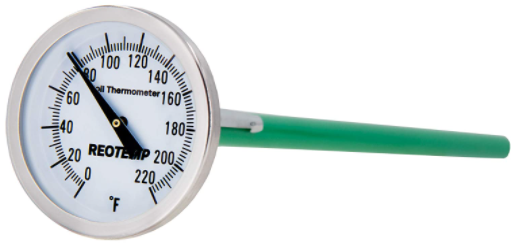
Fertilizers give your lawns added nutrients that help them grow healthy and green all year round. To get the best out of your fertilizer, do spread lawn food in the spring when the soil temperature reaches 55 degrees Fahrenheit.
Buy a soil thermometer like the REOTEMP K82-3 Soil Thermometer to check the temperature when you want to. If you don’t have one, you will know when the lilacs bloom, and your grass starts to grow.
What Kind of Fertilizer should you use?
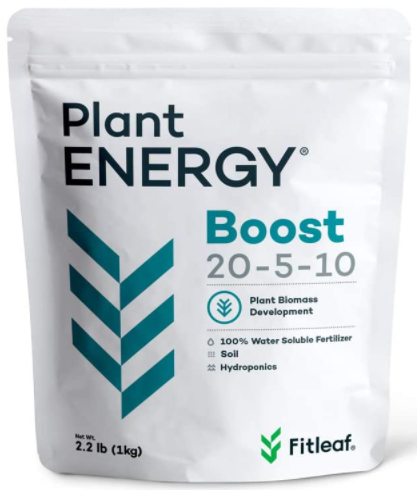
Buy fertilizers with the right mix of nitrogen, phosphorus, and potassium, which are the nutrients that your lawn needs. For springtime feeding, get something with high nitrogen content, some potassium, and then low phosphorus.
Getting something like Fitleaf Plant Energy Boost 20-5-10, where the numbers show the percentage of nitrogen, phosphorus, and potassium. This product will be great to use for springtime fertilizing.
You might also consider slow-release fertilizer such as the Milorganite 32 lb. Slow-Release Nitrogen Fertilizer, so you don’t have to fertilize your lawn that often. This type of fertilizer can give your lawn the nutrients it needs over time.
Check out how Milorganite compares to Ringer Lawn.
Going Organic
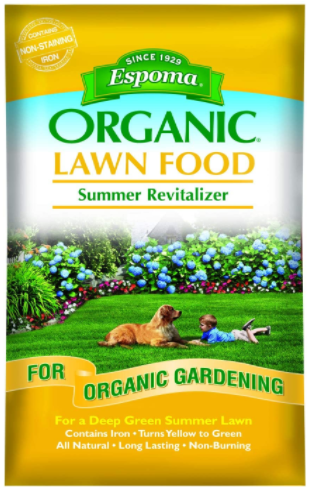
If you’re worried about how the fertilizers you use may harm the environment, you might want to go organic. A study made by Austin’s Watershed Protection and Development Review showed that organic fertilizers with low proportions of phosphorus do not pollute as much as other fertilizers.
Some products you might want to try include:
- Espoma EOSR30 Organic Summer Fertilizer
- Safer Brand Ringer Lawn Restore
- Dr. Earth Super Natural Liquid Lawn Fertilizer
Timing
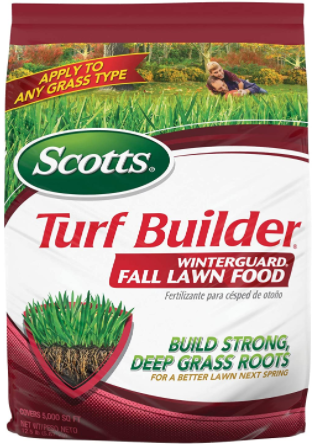
You will need to fertilize your lawns about five times a year. You should follow this schedule:
- Time the first feeding in mid to late April
- Four weeks after the first application
- Six to eight weeks through October
- Fall feeding
Most people neglect their lawns when fall comes, but that shouldn’t be the case. Fertilizing the grass in autumn will help it prepare for and survive the colder winter months. You should ensure that your lawn is fed with fertilizers such as:
Use a Spreader
The best way to apply fertilizer is to use a spreader. To do so, pour the lawn food into a spreader, but be sure to do this away from the grass. If you spill too much fertilizer on one area, you might end up burning the grass and killing it.
It’s easier to use a broadcast spreader when fertilizing your lawns because it can disperse fertilizers over a wide distance. Get something like the Agri-Fab 45-0462 Push Broadcast Spreader for an easier time.
This video will show you how to fertilize your lawn:
Tips for Fertilizing Your Lawn
Here are some things that you should remember when feeding your lawn:
- Always sweep up the extra granules that spill on your patio, sidewalk, or driveway. Doing this will keep the granules out of bodies of water and eliminate additional water pollution.
- Water your lawn after you fertilize it and when you see the grass growing.
- Don’t overapply fertilizer.
- With a smaller lawn, you can use a handheld broadcast spreader such as the Scotts Whirl Hand-Powered Spreader. Handheld spreaders are also useful for fertilizing narrow spaces that have densely growing grass.
Use Compost
There is a world of benefits that you can get from composting. For one, it’s very environmentally friendly as you can use the grass clippings for your compost. You can also use kitchen waste to make more compost.
Compost can make your grass greener, and you can also use it for your other plants. On top of that, composting can also make your soil drain better.
Compost can nourish the soil with its slow release of nutrients. It can also encourage roots to grow better.
Other benefits of using compost include:
- Help keep the topsoil intact so it doesn’t erode
- Reduces the instances of soil-borne diseases and pests
- Helps soil become more pH balanced
- Encourages worms, beneficial insects, and other organisms
- The best material for soil amendments as it can make clay soil drain while helping sandy soil retain water.
How to Make Your Own Compost
There are several ways to make compost at home, and it all depends on what is more comfortable for you. You really don’t have to do a lot of work for composting. Two of the easiest ways are outlined here.
The One-Step Composting
This method of composting is very easy to do. You only have to pile grass clippings after you mow and rake your lawn. Water the pile so that it is moist. After a few months, you will have ready to use compost.
If you want to get your compost faster, you can aerate it every few weeks. This video will show you what to do:
.
The Trash Can Method
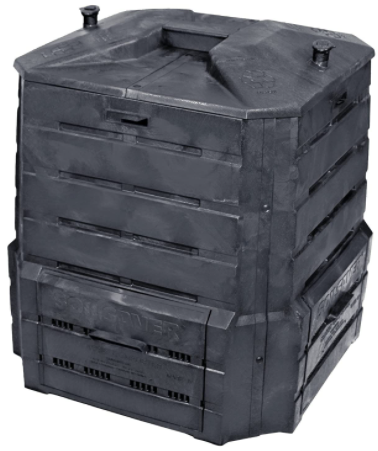
If you have a big and tall container, you can punch holes into it and put on bricks to keep the entire trash can off the ground.
Line the bottom with garden soil, kitchen scraps, and grass clipping and mix them. Water the mixture so that it becomes sufficiently moist and cover the trash can with its lid.
Put more scraps and grass clipping as they become available. Mix the new additions in and water the top layers.
You should be getting compost in a few months. And if you wish to make it more convenient, composting bins like the Algreen Products Soil Saver, which has a lower hatch that makes it easier for you to get the compost at the bottom of the container while allowing you to add food scrap at the top.
This video will show you how to compost using this composting bin. The latter part of the video will also show you how to compost by burying the food scraps or grass clippings into the ground.
.
Overseeding An Existing Lawn
Sometimes, you need to do some overseeding to keep your lawn looking beautiful. Overseeding is when you spread grass seeds over your existing lawn.
As grass matures, it can grow thin, and you will need to spread new seeds to get new growth instead of starting everything from scratch. Because it’s bound to happen, you should overseed to prevent thinning.
As with planting seeds on a new lawn, you will want to time your overseeding properly. Cool-season grasses should be planted in the late summer or early fall. If you missed that, you could probably sow the extra seeds in the spring.
Warm-season grass can be overseeded in the late spring. If you want green lawns over winter, you can overseed in the fall, when the nighttime temperatures are under 65 degrees Fahrenheit.
Learn how to do overseeding for your lawn correctly.
You can also do overseeding without having to aerate first. Here’s how.
Preventing Lawn Diseases
Another way that you can ensure that you have a nice looking lawn is to watch out for diseases that can hit it. If your grass starts turning brown and some sort of disease starts to kill it, you must be able to identify what type of disease it is. Some of the most common grass diseases and how to identify them are:
Brown Patch
- Your lawn has patches of sunken and dead grass that can be as wide as three feet.
- The blades of your grass darken, and then they wilt and die.
- Patches of dead grass that are grayish
- Most likely to be affected: Tall fescue, perennial ryegrass, Bermuda grass, and bentgrass. It can also impact fine fescue, St. Augustine grass, and Kentucky bluegrass.
- Most likely to occur during fall and spring times because of the warmer weather.
- Humidity, wet leaves, excess water, and overfertilizing can make it worse.
Dollar Spot
- It can spread up to six inches wide, but these smaller patches can merge into bigger blocks.
- Your grass will have spots that are yellow and looks soaked in water.
- Cobweb-like growth will appear.
- Most likely to be affected: fine fescue, bentgrass, centipede grass, and perennial ryegrass. Kentucky bluegrass, Bermuda grass, Zoysia grass, and tall fescue are also affected.
- Most likely to occur in the dying days of spring right down to autumn, when temperatures are mild to warm.
- Most likely causes: under fertilizing, drought, too much moisture, thatches
Gray Leaf Spot
- Irregular patches of diseased grass merge to form a larger area.
- Grass develops bleached out spots with dark brown edges.
- Most likely to affect tall fescue and perennial ryegrass, as well as Augustine grass.
- Moderately hot weather with a lot of precipitation usually brings gray leaf spot, helped by poor air circulation, overfertilizing, shade, and overwatering.
Leaf Spot
- The blades of grass on your lawn have oval and elongated brown spots with purple-brown margins.
- Rotting at the roots or crowns while the blades become thinner.
- Most likely to affect Bermuda grass, Kentucky bluegrass, tall fescue, fine fescue, and perennial ryegrass.
- Leaf spot can happen when it’s unseasonably warm or unseasonably cold.
- Compacted and arid soil can make leaf spots worse.
Pythium
- You have withering and blackened grass in patches that expand.
- The blades of grass stick to one another and look oily, while the roots start to rot and the grasses die.
- Pythium usually attacks bentgrass and perennial ryegrass, but bluegrass and fine fescue are not safe.
- High humidity, warm temperatures, and constantly wet ground can make pythium quickly spread. It’s also a result of overfertilizing, overwatering, compacted soil, and keeping the grass in too much shade can worsen the infection.
Red Thread
- Red thread gets its name from the red patches that appear when the grass blades that make it wither starting from the tips.
- The grass leaves develop pink to red threads that make the blades stick together.
- Your shoes, tools, and even the mower get red spores.
- This fungal infection can affect fine fescue, perennial ryegrass, bentgrass, and bluegrass.
- Red thread usually forms when you don’t fertilize your lawn with the following conditions: high humidity, not too much sun, compacted soil, too much thatching, the blades are always wet.
Rust Grass
- With rust grass, you have irregular patches of thinking grass with yellow specks that eventually turn rust-colored.
- The grass blades have orange to red bumps that can sometimes cover your mower, shoes, or tools.
- Most commonly affected are Kentucky bluegrass, perennial ryegrass, Zoysia grass, and tall fescue, while bentgrass and fine fescues are also infected.
- Rust grass can happen from early summer and right through autumn, with high humidity, constant wetness, drought stress, under fertilizing, and too little sun egging it on.
Snow Mold
- Snow mold can be identified by the circular and small spots that are pinkish in color. These spots can form patches of around a foot or more.
- The leaves are water-soaked and will turn red to brown before eventually turning tan.
- There will be pinkish or white fungal threads that you will find between the grass blades.
- Most likely to be affected are fine and tall fescues, as well as perennial ryegrass, Kentucky bluegrass, and bentgrass.
- Snow mold is encouraged by cool temperatures and wet conditions, helped by overfertilizing in the fall, too much shade, and poor drainage.
Summer Patch
- You have dead grasses with tan colors with a few green blades surrounding seemingly healthy grasses at the center.
- Dark brown threads cover the grass stolons, rhizomes, and crowns.
- Most likely to strike fine fescue and Kentucky bluegrass, but can affect perennial ryegrass, as well.
- Summer patch is most likely to develop when it’s unusually hot in the late spring through summer. Plus, when the soil is moist and compacted, or if you cut the grass too short or your lawn has poor drainage.
The Perfect Lawn: Treating and Preventing Diseases
Identifying what kind of disease is affecting your lawn will help you know how to treat it.
More than just treating any kind of disease that strikes your lawn, you should work harder at preventing it. Be sure to:
- Know the kind of grass your growing and the pH level they need, and make sure that your soil has that pH
- Fertilize, water, and mow your grass properly
- If you’re still starting your lawn, make sure that you use premium grass seeds.
- Dethatch your lawns
- Aerate the soil at regular intervals
- Consider using pesticides when the infection is severe.
But more than treating lawn diseases, the best way is still to prevent these infections from happening in the first place. And just how do you do that?
Keep the soil pH at slightly acidic levels between 6.0 and 7.0
At this level of acidity, the nutrients in the soil are readily available, making it easier for the grass to access them. Test the soil using the best kits and amend if necessary.
Fertilize correctly
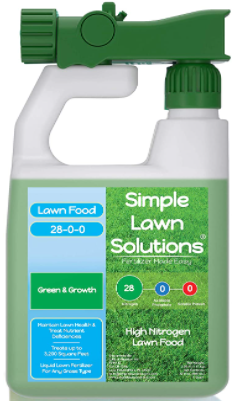
Undernourished or overfertilized grass makes it prone to lawn diseases. You can buy slow-release fertilizers such as the Simple Lawn Solutions Maximum Green & Growth and the Osmocote Fertilizer 19-6-12, Slow Release that can ensure that your grass has access to nutrients when it needs it.
Mow and water your lawn correctly
Inadequate or too much moisture will encourage lawn diseases. You should also avoid sharing your grass too low can also make it weak and susceptible to fungal infections.
Pesticides, Fungicides, and Bactericides for Your Lawn
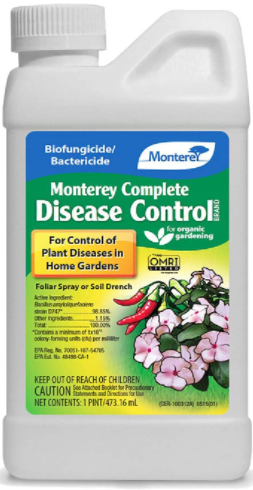
When all else fails, then it’s time to consider using chemicals that can kill the fungi and bacteria that make your grass sick. There are a number of products that you can try:
- Monterey LG3374 Complete Concentrate Fungicide & Bactericide for Control of Garden & Lawn Diseases
- Natria 100532523 Bayer Lawn Weed & Disease Control Concentrate
- BioAdvanced 701270A Effective Fungicide with Disease Prevention Fungus Control for Lawns
Ensure that you read, understand, and follow the instructions on the proper use of these products so that you don’t harm the grass. This article cautions that kids are often exposed more to pesticides and fertilizers, which can be dangerous as their development can be hampered and disrupted.
Learn more about how to spray fungicides for lawn disease control by watching this video:
FAQs
Answer: Warm-season grasses are suitable for areas that have hot summers, and they are not hardy for winter. They often grow healthy and thrive in mid to late spring, right through the hot summer months. Some examples of warm-season grasses include:
• Bermuda grass
• St. Augustine grass
• Centipede grass
• Zoysia grass
• Carpet grass.
Meanwhile, cool-season grasses are winter hardy and thrive best during fall through spring. These grasses often go dormant when the cold winter months come. But in areas where winter doesn’t bring frozen ground, these grasses can stay green. Some examples include:
• Fescues
• Kentucky bluegrass
• Bentgrass
• Varieties of ryegrass
Answer: Excellent looking lawns get a lot of foot traffic. This scenario is especially true if you planned your yard to be where the kids and your pets can run free. The bad news is that heavy foot traffic can usually mean dead grass or an area that’s an unsightly patch of brown soil.
Answer: There is a misconception that you should rake up grass clippings after you mow your lawn. People think that the grass clippings would add to the thatch that forms when you have dead plant life.
Thatch is a layer of dead plant tissues that accumulate on the surface of your lawn. When left alone, thatch becomes too thick, which is enough to prevent airflow into the soil and may even deprive your grass of essential nutrients.
However, thatch is made up of dead roots and stems, not the grass clippings. The cut blades of grass become fertilizer for your lawn. The top part of grass leaves are where the nutrients and water are stored, so it makes sense to leave them on your lawn after you’re done mowing.
This situation is especially true if you don’t want to use grass clippings for your compost. What’s more, if you’re using a powerful mower, these machines can cut down grass clippings and twigs into mulch, which will further benefit your lawn.
But there is one caveat: don’t leave longer blades of grass on your lawn because they can invite lawn pests, which like shady areas. If you want to keep the grass short, consider mowing your lawn twice, each time cutting the grass shorter and shorter.
Leaving the grass clipping on your lawn is called grasscycling, and this video shows you how to do it.
1. Choose a grass that is hardy to foot traffic, such as Kentucky bluegrass, tall fescue, perennial ryegrass, Bermuda grass, or Zoysia grass.
2. Aerate the soil to make sure that it’s not compacted.
3. Fertilize the grass regularly to ply it with nutrients.
4. Avoid mowing the grass too short of ensuring that it doesn’t burn or grow weak.
5. If you have play equipment, consider putting it in different areas as time passes. This way, you don’t overuse one lawn area, and the foot traffic is rotated.
Grow a Perfect Grass Lawn
With all the steps and tips outlined here, it may seem like growing the perfect grass lawn is next to impossible if you’re a homeowner taking care of an average yard. But you don’t have to do all of these things all at once. Start by planning your lawn, choosing the best seeds or lawn turf available to you, and then water your lawn as needed.
Fertilizing, mowing, composting, aeration, and preventing lawn disease can be done at a much later time and usually only when needed. Now that you understand everything you need to know about growing the perfect grass lawn, you can apply it all and be the envy of the entire block. Check out our full Sunday Lawn Review or read more about finding the best grass seed if you live in:

